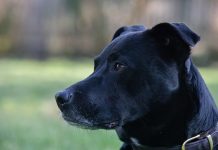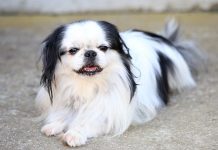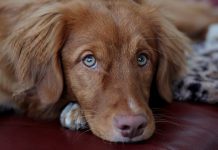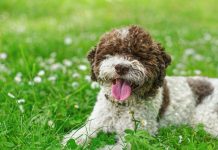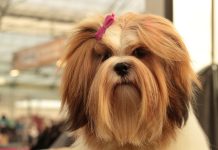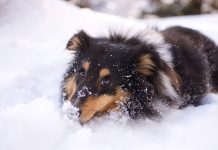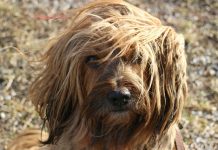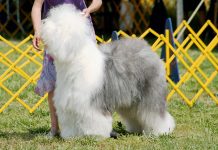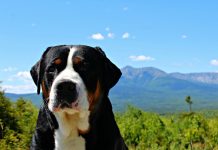History and Origins of the English Bulldog Breed:

The English Bulldog, often simply referred to as the Bulldog, has a fascinating history that dates back several centuries. Here’s a look at the origins and evolution of this iconic breed:
- Origins in Bull-baiting: The English Bulldog’s history traces back to England in the 1500s when they were originally bred for bull-baiting, a cruel and now outlawed sport. Bulldogs were selected for their tenacity, strength, and courage in confronting bulls in the ring.
- Development of the Breed: Over time, as bull-baiting became illegal, Bulldogs were no longer needed for this purpose. The breed was refined to have a more amiable and gentle temperament, and breeders focused on preserving the Bulldog’s unique appearance and distinctive characteristics.
- Appearance in Art and Culture: English Bulldogs gained popularity in England and were often depicted in paintings and prints as symbols of determination and stoicism. They became associated with British identity and were favored by various historical figures, including Winston Churchill.
- Selective Breeding: Breeders worked to refine the Bulldog’s physical traits, such as its distinctive pushed-in nose, stocky build, and characteristic wrinkles. The breed’s appearance evolved into the iconic Bulldog we recognize today.
- Recognition and Standardization: The English Bulldog was officially recognized by the Kennel Club in England in the late 1800s. Breed standards were established to define the ideal characteristics of the Bulldog, including its distinctive head shape, compact body, and unique gait.
- Modern Role as Companion Dogs: Today, English Bulldogs are cherished as beloved companion dogs known for their gentle demeanor, loyalty, and affectionate nature. They have become popular pets worldwide and are recognized by major kennel clubs as a distinct breed.
Physical Characteristics and Appearance of English Bulldogs:
English Bulldogs are instantly recognizable due to their distinctive appearance and charming expressions. Here are the key physical characteristics and features of the breed:
- Head and Face: Bulldogs have a large, square head with a pronounced forehead and well-defined muzzle. Their pushed-in nose (brachycephalic) is a defining trait, with broad nostrils and a slightly upturned jaw.
- Expression: Bulldogs are known for their distinctive “frown” and expressive face, which often conveys a blend of seriousness and sweetness.
- Body: Bulldogs have a compact, muscular body with a deep chest and broad shoulders. They have a distinctive waddle-like gait due to their short legs and heavy build.
- Coat and Color: Bulldogs have a short, smooth coat that comes in various colors, including brindle, fawn, white, red, and combinations of these colors. They may have patches or markings in different shades.
- Wrinkles and Skin Folds: Bulldogs have loose skin with characteristic wrinkles around the face, neck, and shoulders. Proper care and cleaning of skin folds are important to prevent irritation and infections.
- Tail: Bulldogs have a short, straight tail that may be either straight or screwed.
- Size: Adult Bulldogs typically weigh between 40 to 50 pounds (18 to 23 kg) and stand around 12 to 15 inches (30 to 38 cm) at the shoulder.
- Overall Appearance: Bulldogs have a sturdy and solid appearance, conveying strength and determination. Despite their muscular build, they are known for their gentle and affectionate nature.
English Bulldogs are a beloved breed known for their unique appearance, charming personality, and historical significance. They make wonderful companions for families and individuals seeking a loyal and devoted canine friend.
English Bulldog Temperament and Personality Traits:
English Bulldogs are known for their distinct temperament and charming personality. Here are some key traits that define the temperament of the breed:
- Gentle and Affectionate: Bulldogs are affectionate and loving companions, often forming strong bonds with their families. They thrive on attention and enjoy being close to their human companions.
- Friendly and Sociable: Despite their intimidating appearance, Bulldogs are generally friendly and sociable dogs. They are good-natured and usually get along well with children and other pets, making them excellent family pets.
- Docile and Laid-Back: Bulldogs have a calm and laid-back demeanor, preferring relaxed activities over high-energy exercises. They are content to lounge around the house and enjoy spending quality time with their owners.
- Courageous and Determined: Bulldogs possess a courageous spirit and strong determination, traits that were historically valued during their days as bull-baiting dogs. However, modern Bulldogs are gentle and rarely display aggression.
- Stubbornness: Bulldogs can be stubborn and have their own opinions, which can sometimes make training a bit challenging. Patience and positive reinforcement are key to successful training.
- Protective Instincts: Bulldogs have a natural protective instinct towards their families, although they are not aggressive guard dogs. They will alert their owners to any unusual activity but are not typically aggressive towards strangers.
- Adaptable: Bulldogs are adaptable to various living situations and can thrive in apartments or larger homes, as long as their exercise and health needs are met.
- Sensitivity: Bulldogs are sensitive dogs and may not respond well to harsh training methods or negative reinforcement. They thrive in environments where they feel loved and respected.
Training and Exercise Needs for English Bulldogs:
- Training Approach: Bulldogs respond best to positive reinforcement techniques, including praise, treats, and rewards. Keep training sessions short and engaging to hold their interest.
- Basic Obedience: Start training early to establish good behavior habits. Focus on teaching basic commands such as sit, stay, come, and heel.
- Socialization: Expose Bulldogs to different people, pets, and environments from a young age to help them develop good social skills and confidence.
- Exercise Requirements: Bulldogs have low to moderate exercise needs and are not highly active dogs. Short daily walks and playtime in a fenced yard are usually sufficient to keep them healthy and happy.
- Avoid Overexertion: Due to their brachycephalic (short-faced) anatomy, Bulldogs are sensitive to heat and may struggle with vigorous exercise. Avoid exercising them in hot weather and provide plenty of water breaks.
- Health Considerations: Be mindful of their physical limitations when exercising Bulldogs. They may experience breathing difficulties if overexerted.
- Consistency and Patience: Bulldogs can be slow learners and may require patience during training. Consistency and positive reinforcement will yield the best results.
Overall, English Bulldogs make wonderful companions for families and individuals seeking a loving and easygoing dog. With proper training, socialization, and care, Bulldogs thrive as affectionate members of the family, bringing joy and companionship to their owners.
Health Considerations and Common Issues in English Bulldogs:

English Bulldogs are charming companions, but they are prone to certain health issues due to their unique physical characteristics. It’s essential for prospective owners to be aware of these considerations:
- Brachycephalic Airway Syndrome (BAS): Bulldogs have a short, pushed-in nose and flattened face, which can lead to breathing difficulties. Symptoms include snoring, wheezing, and labored breathing, especially in hot or humid weather.
- Overheating and Heat Sensitivity: Bulldogs are sensitive to heat and may struggle to regulate their body temperature. Avoid exercising them in hot weather and provide plenty of shade and water.
- Skin Fold Infections: Bulldogs have deep facial wrinkles and skin folds that require regular cleaning to prevent bacterial and yeast infections.
- Hip Dysplasia: This is a common orthopedic issue in Bulldogs, characterized by abnormal hip joint development that can lead to lameness and arthritis.
- Joint Issues: Bulldogs are prone to joint problems, including luxating patellas (kneecap dislocation) and elbow dysplasia.
- Eye Problems: Bulldogs often suffer from eye issues such as cherry eye (prolapsed gland of the third eyelid), entropion (inward rolling of the eyelids), and dry eye.
- Dental Health: Bulldogs may develop dental problems due to their crowded teeth and misaligned jaws. Regular dental care is essential to prevent gum disease and tooth decay.
- Obesity: Bulldogs can easily become overweight due to their sedentary nature. Monitor their diet and exercise to maintain a healthy weight.
Living with an English Bulldog: Suitable Environments and Lifestyle Considerations:
- Indoor Living: Bulldogs thrive in indoor environments and are well-suited for apartment living. They are not highly active dogs and enjoy lounging indoors with their families.
- Climate Control: Bulldogs are sensitive to extreme temperatures. Keep them indoors in air-conditioned or well-ventilated spaces during hot weather to prevent heat-related issues.
- Regular Vet Visits: Routine veterinary care is crucial for Bulldogs to monitor their health and address any potential issues promptly.
- Gentle Exercise: Bulldogs require moderate exercise to stay healthy but should avoid strenuous activities. Short walks and playtime in a secure area are sufficient.
- Regular Grooming: Bulldogs have minimal grooming needs, but their facial wrinkles and skin folds require regular cleaning to prevent infections.
- Affection and Attention: Bulldogs thrive on companionship and enjoy spending time with their families. They are affectionate and loyal dogs that form strong bonds with their owners.
English Bulldog Variations and Breeding Practices:
- Color Variations: Bulldogs come in various colors and patterns, including brindle, fawn, white, red, and pied. Reputable breeders adhere to breed standards and avoid breeding for rare or non-standard colors associated with health issues.
- Breeding Practices: Responsible breeders prioritize health and temperament when selecting breeding pairs. They conduct health screenings for genetic disorders and aim to improve the breed while maintaining its unique characteristics.
- Avoiding Extremes: Ethical breeders avoid exaggerating certain features (such as extreme wrinkling or exaggerated brachycephalic traits) that can compromise the Bulldog’s health and quality of life.
- Health Testing: Reputable breeders conduct health testing, including hip evaluations, eye examinations, and genetic screening, to ensure the health and well-being of their breeding dogs and puppies.
Choosing a reputable breeder who follows ethical breeding practices is essential for acquiring a healthy and well-adjusted English Bulldog. Proper care, regular veterinary check-ups, and a suitable living environment are key to providing a happy and fulfilling life for this beloved breed.
50 Best Names with Meanings for English Bulldogs
Choosing the perfect name for your English Bulldog is an exciting part of welcoming them into your family. Here are 50 great names along with their meanings that suit the charm and personality of English Bulldogs:
- Winston – Means “joyful stone,” reflecting strength and resilience.
- Bella – Italian for “beautiful,” perfect for a lovely Bulldog.
- Tank – Reflects the Bulldog’s robust and sturdy build.
- Daisy – Symbolizes freshness, innocence, and cheerfulness.
- Rocky – Represents strength and determination.
- Stella – Latin for “star,” symbolizing brightness and radiance.
- Gus – Short for “Augustus,” meaning “great” or “venerable.”
- Pearl – A gemstone name representing purity and elegance.
- Bruno – Means “brown-haired” or “shield,” ideal for a strong Bulldog.
- Lola – A lively and charming name for a playful Bulldog.
- Thor – Named after the powerful Norse god of thunder.
- Millie – Of German origin, meaning “strength” or “determination.”
- Moose – Represents a large and imposing presence.
- Mabel – A vintage name meaning “lovable” and “amiable.”
- Hercules – Inspired by the legendary hero known for strength.
- Lucy – Derived from “lux,” meaning “light” or “illumination.”
- Sarge – Short for “sergeant,” symbolizing authority and strength.
- Dottie – Perfect for a Bulldog with distinctive markings.
- Tank – Reflects the Bulldog’s robust and sturdy build.
- Oscar – Means “divine strength” or “God’s spear.”
- Maggie – Short for “Margaret,” meaning “pearl.”
- Butch – Represents toughness and resilience.
- Hazel – Named after the hazel tree, symbolizing wisdom.
- Champ – Signifies a champion or winner.
- Sadie – Means “princess” or “noblewoman.”
- Buster – Represents a tough and resilient nature.
- Cleo – Short for “Cleopatra,” symbolizing royalty and elegance.
- Diesel – Reflects strength and power.
- Ivy – A symbol of fidelity, friendship, and eternal life.
- Roscoe – Means “deer forest,” reflecting strength and agility.
- Zoe – Greek for “life,” symbolizing vitality.
- Rex – Latin for “king,” suitable for a regal Bulldog.
- Lulu – A lively and energetic name for a playful Bulldog.
- Hugo – Means “bright in mind and spirit.”
- Pearl – Represents purity and elegance.
- Ruby – A gemstone name symbolizing passion and vitality.
- Spike – Reflects a strong and spirited personality.
- Winnie – Short for “Winifred,” meaning “blessed peacemaking.”
- Mack – Short for “Mackenzie,” meaning “son of Kenneth.”
- Gizmo – Playful and curious, like the beloved movie character.
- Roxy – Short for “Roxanne,” meaning “dawn” or “bright.”
- Axel – Means “father of peace,” ideal for a calm Bulldog.
- Lola – A lively and charming name for a playful Bulldog.
- Max – Short for “Maximilian,” signifying “the greatest.”
- Winnie – Short for “Winifred,” meaning “blessed peacemaking.”
- Zeus – Named after the powerful Greek god of the sky.
- Coco – Inspired by the famous fashion designer Coco Chanel.
- Olive – Symbolizes peace and abundance.
- Teddy – Soft and cuddly, like a favorite teddy bear.
- Scout – Represents a vigilant and watchful nature.
Choose a name that resonates with your Bulldog’s personality, appearance, or the meaning behind the name. Whether you prefer classic, trendy, or unique names, each of these options is sure to complement your Bulldog’s delightful character and become a beloved part of your family.

In conclusion, this comprehensive guide to English Bulldog dogs has provided a thorough exploration of this iconic and beloved breed. Throughout our discussion, we’ve delved into the rich history, distinctive characteristics, and essential care considerations that define English Bulldogs. Known for their sturdy build, gentle temperament, and distinctive wrinkled face, English Bulldogs make wonderful companions and family pets. They are known for their loyalty and affection towards their owners, despite their somewhat stubborn nature. As you embark on your journey with an English Bulldog, may you appreciate their unique charm and form a strong and lasting bond with this wonderful breed, creating cherished memories and experiences together.







